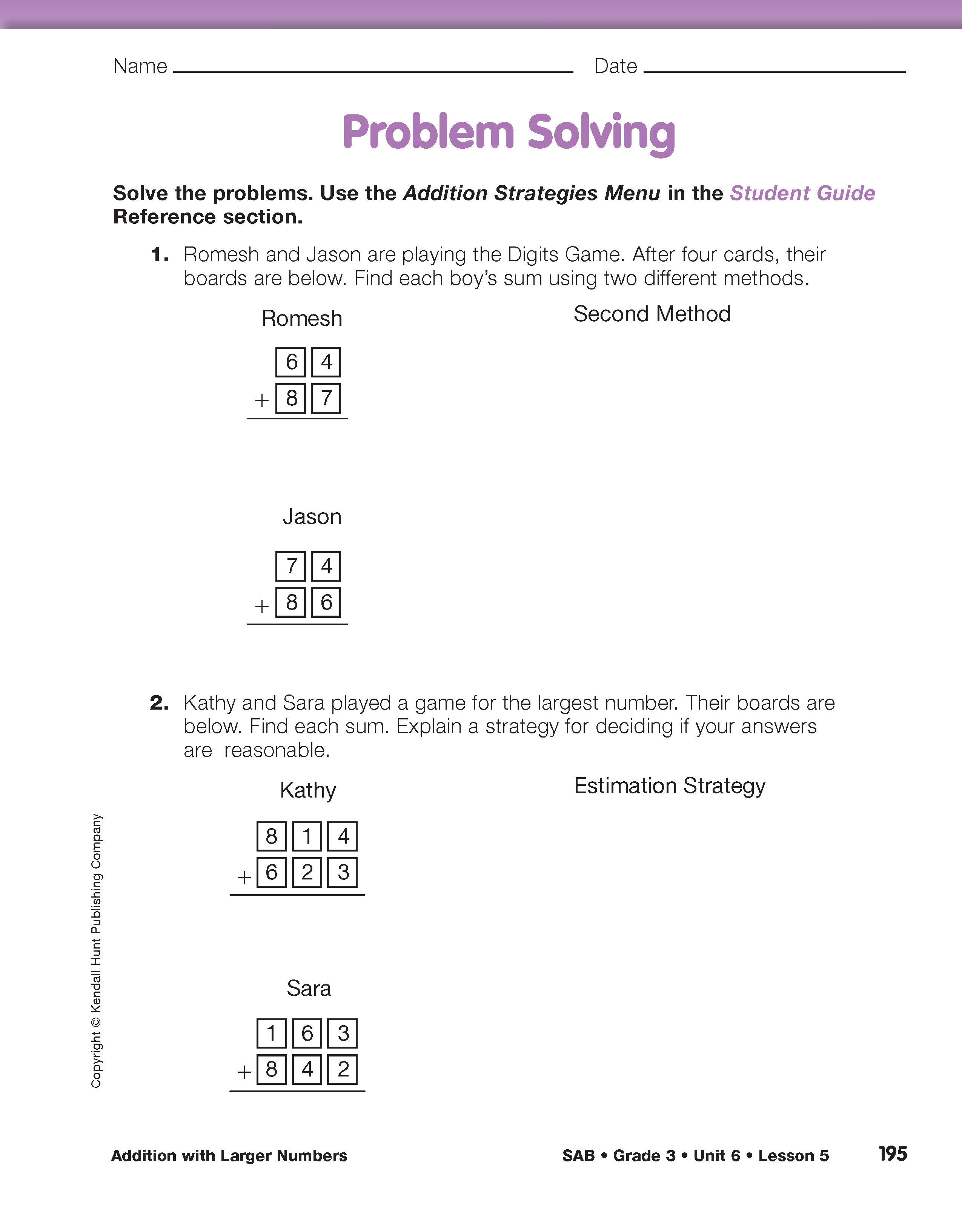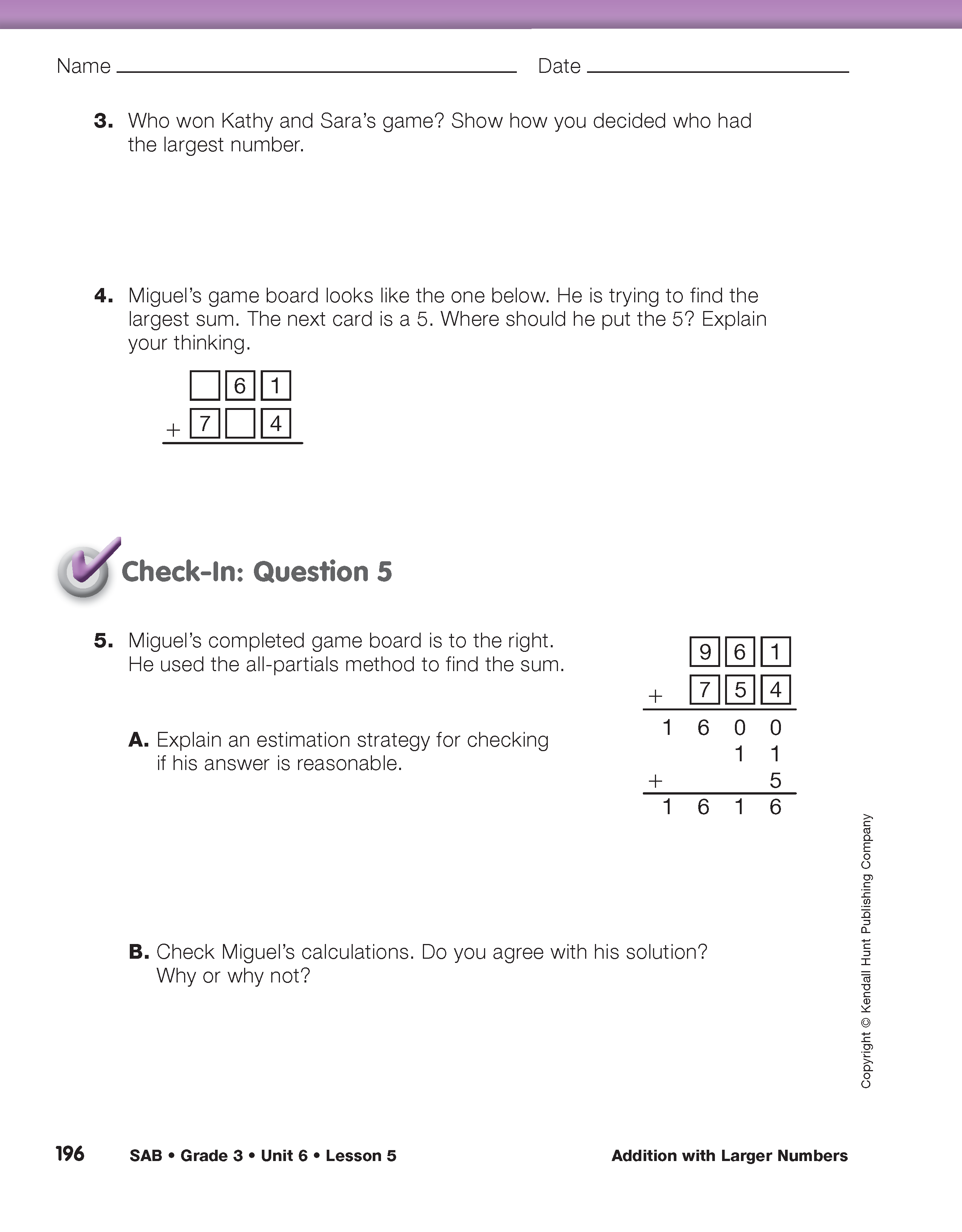Addition with Larger Numbers
Est. Class Sessions: 4Summarizing the Lesson
After students have had a chance to play several games, share the strategies they used to make the largest or smallest sums. The game can be played on an ongoing basis and sent home to play with a family member as homework.
Display the Digits Game playing boards shown in Figure 13.
Say:
Assign Questions 1–5 on the Problem Solving pages in the Student Activity Book to student pairs to summarize the ideas of the game and lesson. Students solve four more addition problems in Questions 1–2 and check with a second method or estimation strategy. Question 3 provides an opportunity for students to compare and order numbers.
Ask students to discuss Question 4 in pairs, and then discuss as a class. See Figure 14. The discussion of where to place the 5 in Miguel's partially-filled playing board will give insight into students' understanding of place value. Students may say that they would place the 5 in the tens place to save the spot in the hundreds place for the 8 or 9 that are left to be drawn. Others may say that since the 0, 2, 3, 8 and 9 cards are still left to be drawn, they would put the 5 in the hundreds place because it is more likely that the 0, 2, or 3 card will be drawn than the 8 or 9 card. Either choice is correct as long as students can justify their answers.
In Check-In: Question 5, students analyze Miguel's solution.
Distribute and assign the Addition Quiz Assessment Master. Students will need to refer to the Addition Strategies Menu from the Student Guide Reference section.
















